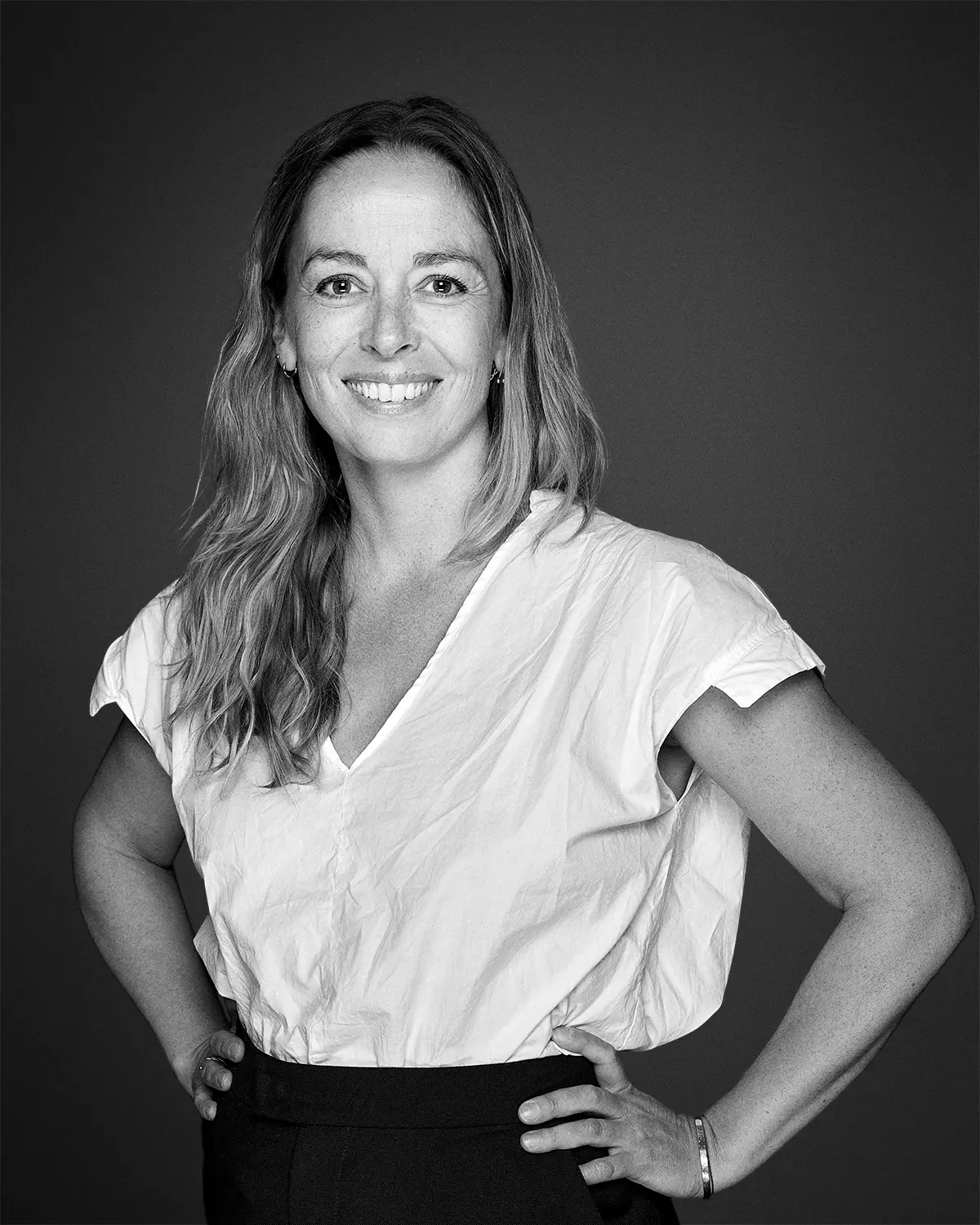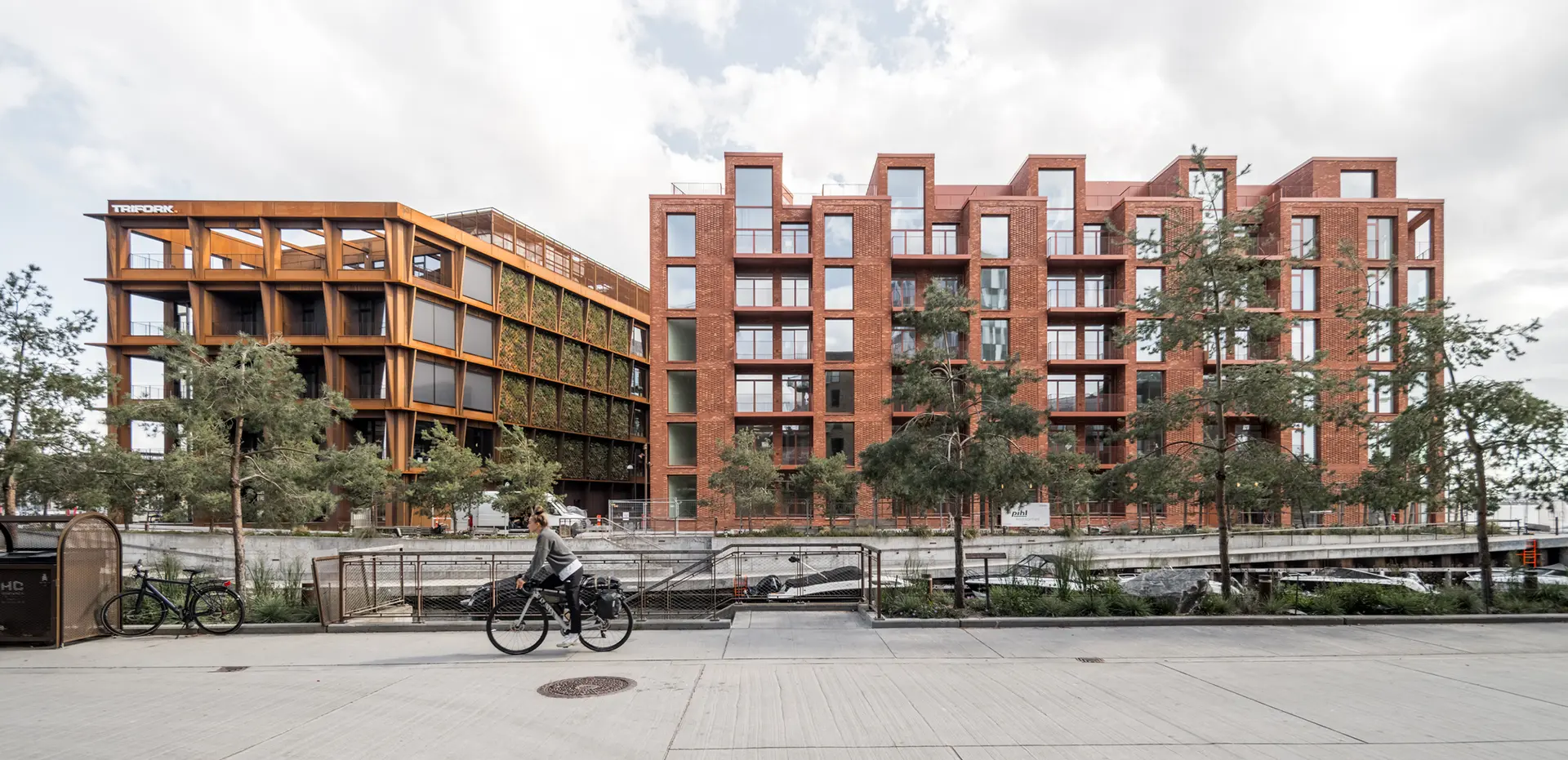
Copenhagen, Denmark
2022 - 2026
Ripple Residence
Setting a new precedent for low-carbon construction standards, Ripple Residence is a six-story residential development located in Copenhagen’s Nordhavn district. Driven by material reuse and designed for disassembly, the mass-timber building is expected to achieve a lifetime carbon footprint of 5 kg CO₂e per m² per year – well below the new Danish carbon regulations.
Project details
Constructed primarily of timber, the 13,000 m² building will include 115 residential apartments and two commercial spaces on the ground floor. Ripple Residence reimagines how we can maximize livability and appeal, while minimizing environmental impact. The project is a scalable prototype that reduces carbon footprint at every stage of the design process.
Denmark is the first country to implement embodied carbon limits in building regulations. Starting 1 July 2025, multi-story apartment buildings must adhere to a maximum of 7.5 kg of CO₂ per m² per year over a 50-year period, with construction-phase emissions capped at 1.5 kg per m².
In tackling carbon emissions, our design process rigorously questioned: how low can we go without compromising aesthetics or comfort? The results at Ripple Residence answer this question, with a projected emission of 5 kg per m² per year – well below the upcoming regulatory thresholds.

“To minimize the CO₂ footprint, we must think beyond the finished building and challenge every stage of its life cycle – from initial design to eventual disassembly – pushing past best practices for low-carbon construction."
Troels Dam Madsen
Design Director – Digital Practice

All phases of the building lifecycle
The environmental cost of construction is a challenge, due to carbon emissions from raw material extraction, transportation, manufacturing, installation, and disposal.
Guided by programming real-time carbon calculations, our efforts focused on reducing operational carbon emissions per occupant by optimizing energy and resource usage. For up-front carbon, we prioritized low-carbon methods during construction, emphasizing waste reduction and the use of electric vehicles to cut emissions. The building is also designed to balance energy demand and capacity, with the residential area approaching self-sufficiency using ground spikes, heat pumps, and solar cells.
LCA calculations show that if the entire Århusgade neighborhood in Nordhavn were built using the same low-carbon principles as Ripple Residence, emissions could be reduced by 61,000 tons of CO₂e. This is equivalent to removing one-third of Copenhagen’s passenger cars from the road for a year, matching the annual emissions of every resident in Nordhavn, or the impact of building a quarter of the city's future M5 metro line.

Repurposing materials
Material recycling is central to the design process, which began with an existing resource: a material bank provided by the now-demolished Bruun Rasmussen auction house in Nordhavn.
Key elements from this historic building are being thoughtfully reintegrated into the design, including red façade tiles repurposed for the entryway, mahogany stairs, and a garbage room and grocery cooling room, both clad in reused steel sheets. Upcycled concrete façade elements will be incorporated into the stairwell entrance, while old windows will be reused to bring natural light and warmth into the residences.





Landscape architecture
A community-oriented courtyard
Two interior courtyards have been designed to maximize lush, green spaces for residents, despite the limited size. With these central common areas, the landscape offers spaces for relaxation and play amidst meadow grasses, cherry trees, and blooming perennials.
Material recycling goes beyond the building itself, seamlessly integrated into the surrounding landscape design. This includes the reuse of façade elements placed at the courtyard entrances, granite slabs incorporated into the hardscaping, and bicycle parking made from reclaimed metal.
“Shared amenities, like a greenhouse, cultivate a healthy, collaborative community, while green hedges and a recycled wood terrace offer opportunities for retreat," says Caroline Németh, Landscape Architect, Team Lead.





Design Director – Digital Practice

Head of Department, Landscape

Director, Denmark
Next project
Nordø and Porten
Explore project